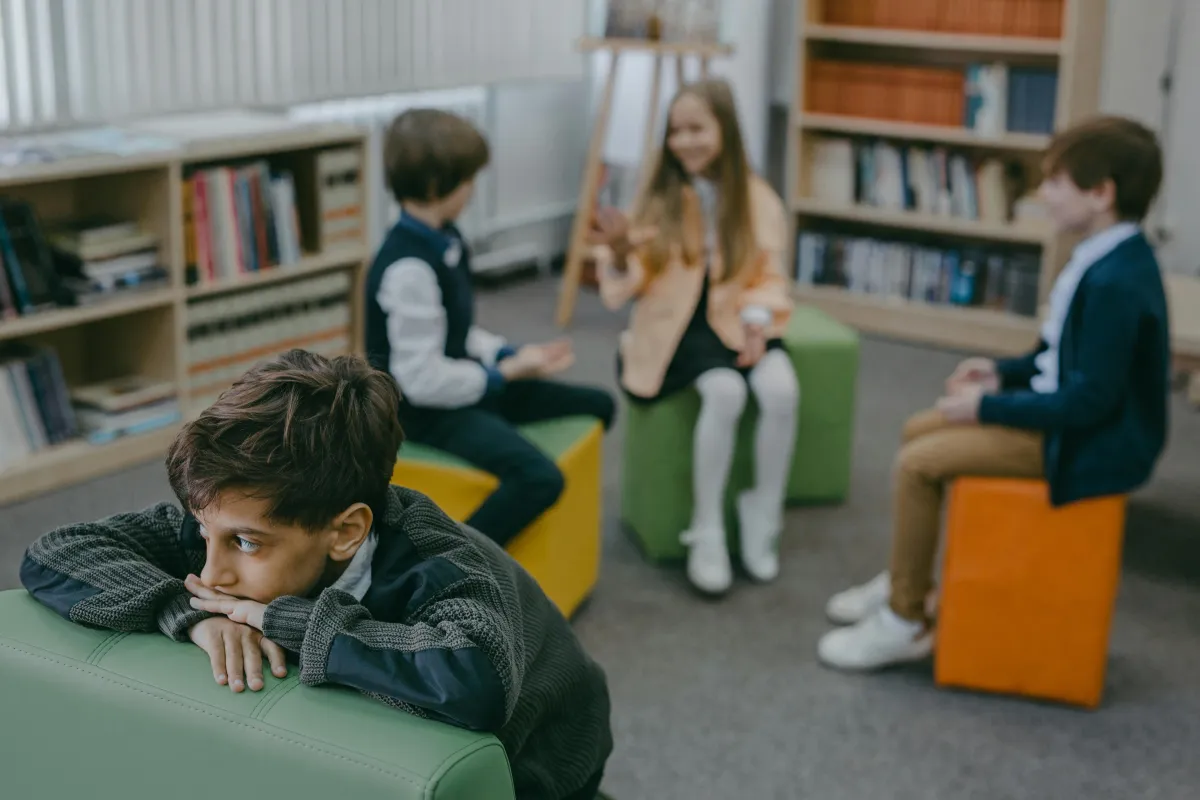Parenting with Purpose
Encouraging Growth and Development of Well-Adjusted Children

When Worry Shows Up: Helping Kids Grow Through Anxiety
Anxiety and stress are creeping into kids’ lives more than ever. Between 2016-2019, childhood anxiety diagnoses shot up by over twenty-five percent. And during the pandemic? Those numbers almost doubled. Kids today are reporting not just emotional symptoms like worry and trouble concentrating, but physical ones too -- headaches, stomachaches, and general --“I-don’t-feel-greats” that show up with no fever in sight.
Naturally, this has many parents worried about how worried their kids are.
But, here’s the twist: not all anxiety is bad. While overwhelming or chronic anxiety can definitely interfere with daily life, a little bit of worry now and then is actually part of being human. It’s not just expected, it can be useful.
The Surprising Useful Side of Anxiety
Anxiety lives on a sliding scale. On one end, you’ve got everyday jitters, like butterflies before a piano recital. On the other, you’ve got anxiety that makes it hard to function. But somewhere in the middle is manageable stress that can nudge kids to care, prepare, and push through.
A bit of worry can:
Act like an internal radar, signaling when something matters
Help kids focus more, and prepare better (especially before math quizzes that suddenly include decimals, fractions, and word problems involving a suspiciously large amount of watermelons).
Build resilience by teaching kids how to handle uncomfortable emotions instead of running from them
Encourage problem-solving and thoughtful planning
Spark emotional growth and resilience as they learn to manage life’s ups and downs
The key is not pretending anxiety doesn’t exist or telling kids to “calm down.” (Let’s be honest, has that ever worked on anyone?) Instead, we want to teach our kids how to live with anxiety and challenges, respond to them in healthy ways, and learn that they can handle hard things.
How Parents Can Help Kids Manage Anxiety Well
Here are a few practical ways to support your child when they are feeling anxious:
Create space for conversation. Ask open-ended questions like, “What’s been on your mind lately?” This can happen anytime, like when they get home from school or right before bed. Also, sometimes a car ride, a walk around the block, or tossing a ball back and forth, can open conversations that face-to-face chats don’t.
Validate their feelings: It’s perfectly natural for kids to feel nervous, scared, or unsure. Instead of brushing it off with “You’ll be fine,” try something like: “That does sound really tough”. When kids feel understood, it actually helps them think more clearly and solve problems on their own.
Help name the feeling. Giving emotions a name, whether it’s “nervous,” “overwhelmed,” or “jittery” -- makes it less scary and more manageable. Emotion Wheels are super helpful here.
Hold the advice (at first). Sometimes kids just need to vent. Listening without rushing to fix shows your child that you trust them to work through it -- and that you’re there if they get stuck.
Break it down. Big worries feel smaller when tackled in steps. Whether it’s making a new friend or presenting in class, help your child plan one manageable piece at a time.
Try Role-playing. Acting out anxiety-inducing situations (like giving a class presentation or asking someone to play) can help kids experiment with different responses. Practicing in a safe, low-pressure setting builds confidence and gives them a sense of control before facing the real thing.
Celebrate effort and progress. Acknowledge your child’s effort and courage to try, whether they nailed it or not.
Praise the process. Encourage working hard, sticking with it, and being brave, rather than focusing only on the end result.
Insert a focus on gratitude and positives. Ask them to share something that made them smile today. Have them name 3 things they are grateful for. Balancing stress with joy helps keep anxiety from taking over the whole mental stage.
Be real with your own struggles. If you’ve ever felt anxious before a big meeting, speaking in public, or gotten the Sunday Night Scaries, share what helped you get through it.
Teach calming strategies. Try “belly breathing” – low, deep breaths that expand the stomach like a balloon. It helps calm the brain’s alarm system (which can freak out over things like forgotten homework or lunches).
Teach the 3-3-3 trick. Have your child name 3 things they see, say 3 things they hear, and move 3 parts of the body. It brings their brain back to the present moment and out of the worry spiral.
Encourage creative outlets. Music, drawing, journaling, dancing – whatever gives your child a way to express what’s going on inside.
Keep an eye on lifestyle basics. Regular movement, good sleep, and a decent breakfast can do more for mood regulation than we often give them credit for.
Offer comfort. Sometimes a cozy space, a quiet presence, or a simple “Want a hug?” can soften the edges of a stressful moment.
Know when to reach out. If anxiety is messing with sleep, school, or daily life, it’s time to check in with a pediatrician or mental health professional. You’re not alone, and neither is your child.
Helping kids grow through anxiety isn’t about getting rid of stress, it’s about guiding them through it, hand-in-hand. When we walk alongside them instead of trying to clear the path entirely, they learn they can do hard things. And that’s the kind of confidence that lasts.
Instagram: parentingtoolchest
Facebook: Parenting Tool Chest
